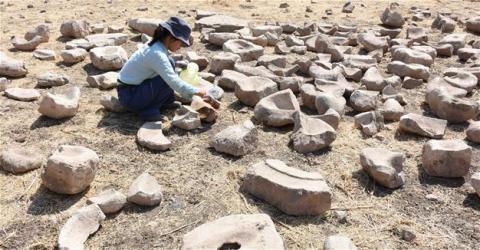11,500-year-old settlement unearthed in Hasankeyf

A settlement from 11,500 years ago has been unearthed in the Hasankeyf Mound on the Tigris River's coastline in the fifth stage of archaeology works at the ancient town of Hasankeyf in the southeastern province of Batman, which has been initiated with the Ilısu Dam HES project protection and rescue works of the cultural heritage.
The head of the excavations in Hasankeyf, Assistant Professor Mevlüt Eliüşük, said 12 Japanese archaeologists are also working in the mound. "Excavations continued in the settlement in the first three months and then the conservation of findings was made. Analyses revealed that the settlement in Hasankeyf Mound dates back to 9,500 B.C., which is 11,500 years ago," he added.
Eliüşük said they found some fields in the excavations and they believe there were steles like the ones in Göbeklitepe there. "But the steles have not survived until today," he added.
He said life continued for 1,000 years in the mound. "The most important feature of the mound is that the settlement did not last there. Settlement began there 11,500 years ago but people abandoned the settlement after living there for 1,000 years," he added.
Japan's Tsukuba University academic Yutaka Miyake, the consultant of the excavations, said the mound dates back to the beginning of the Neoltihic Age and the source of living was hunting and collecting.
"They hunted wild sheep the most. As for plants, we found wild peanuts, almonds and terebinth berries. It is interesting that we did not find pieces of grain or wheat. This place was a settlement before its transition to a field of agriculture or breeding," Miyake said.
According to him, two phases existed in the mound. "In the first phase, the architectural structure of houses...
- Log in to post comments
